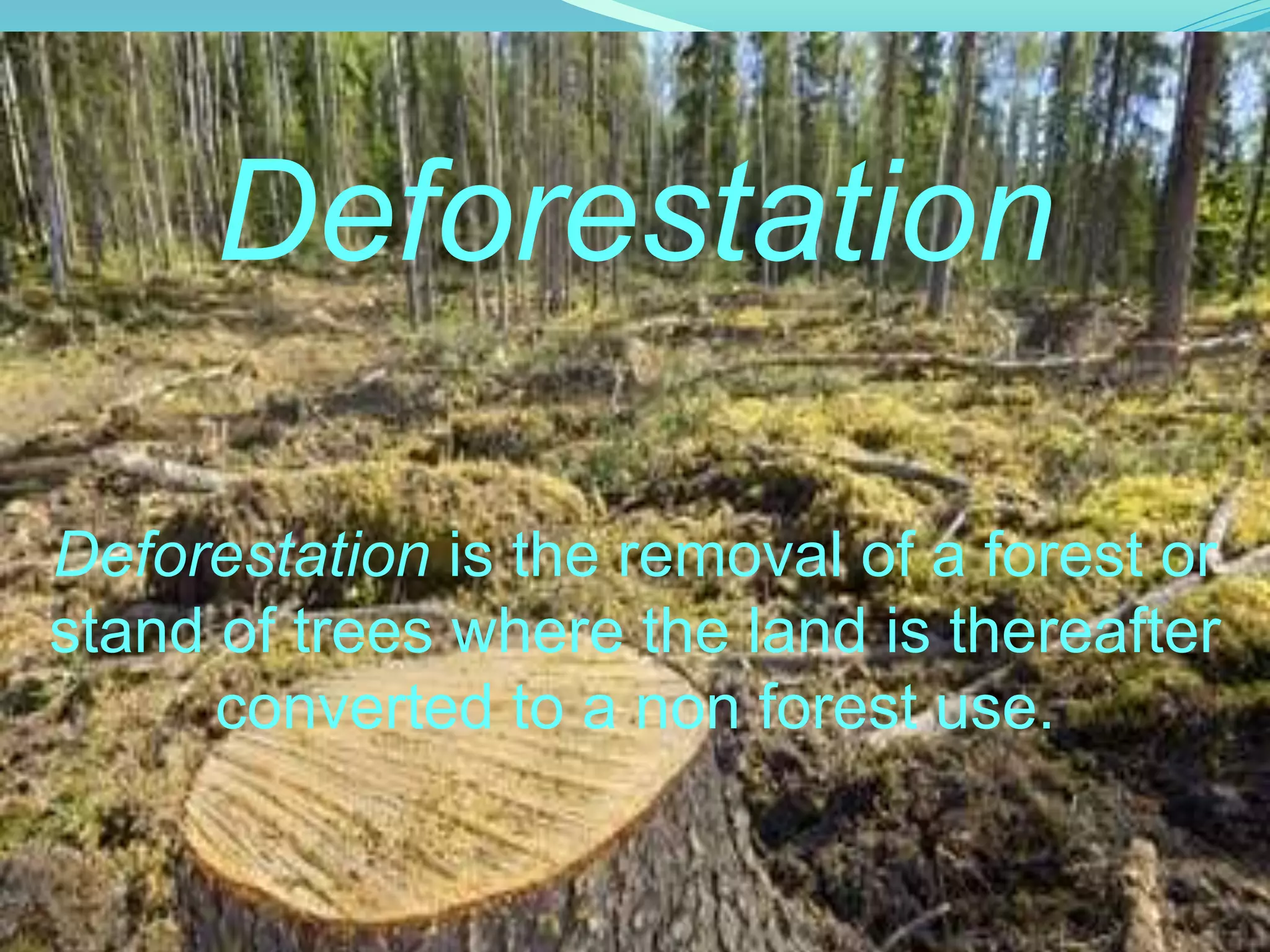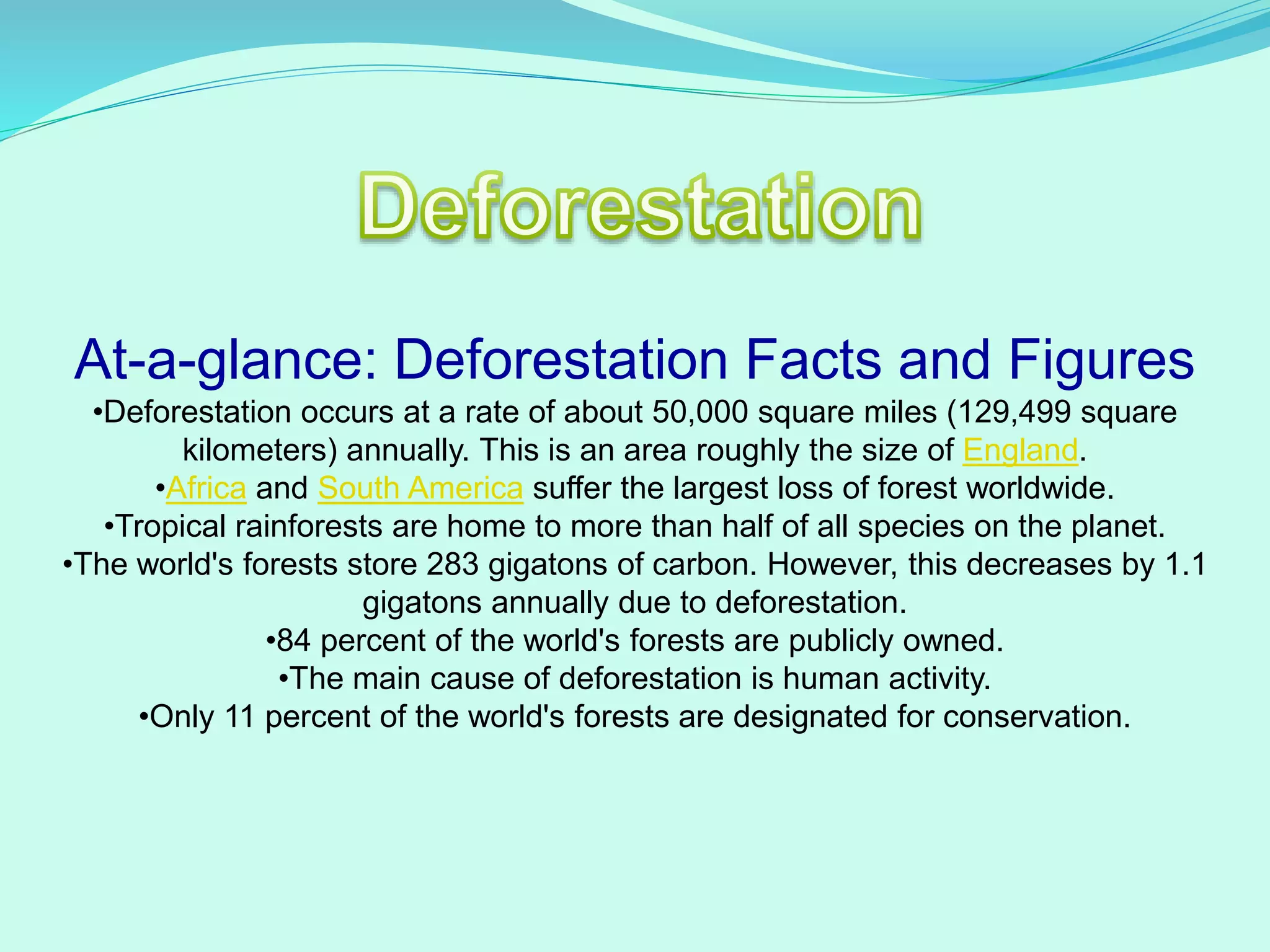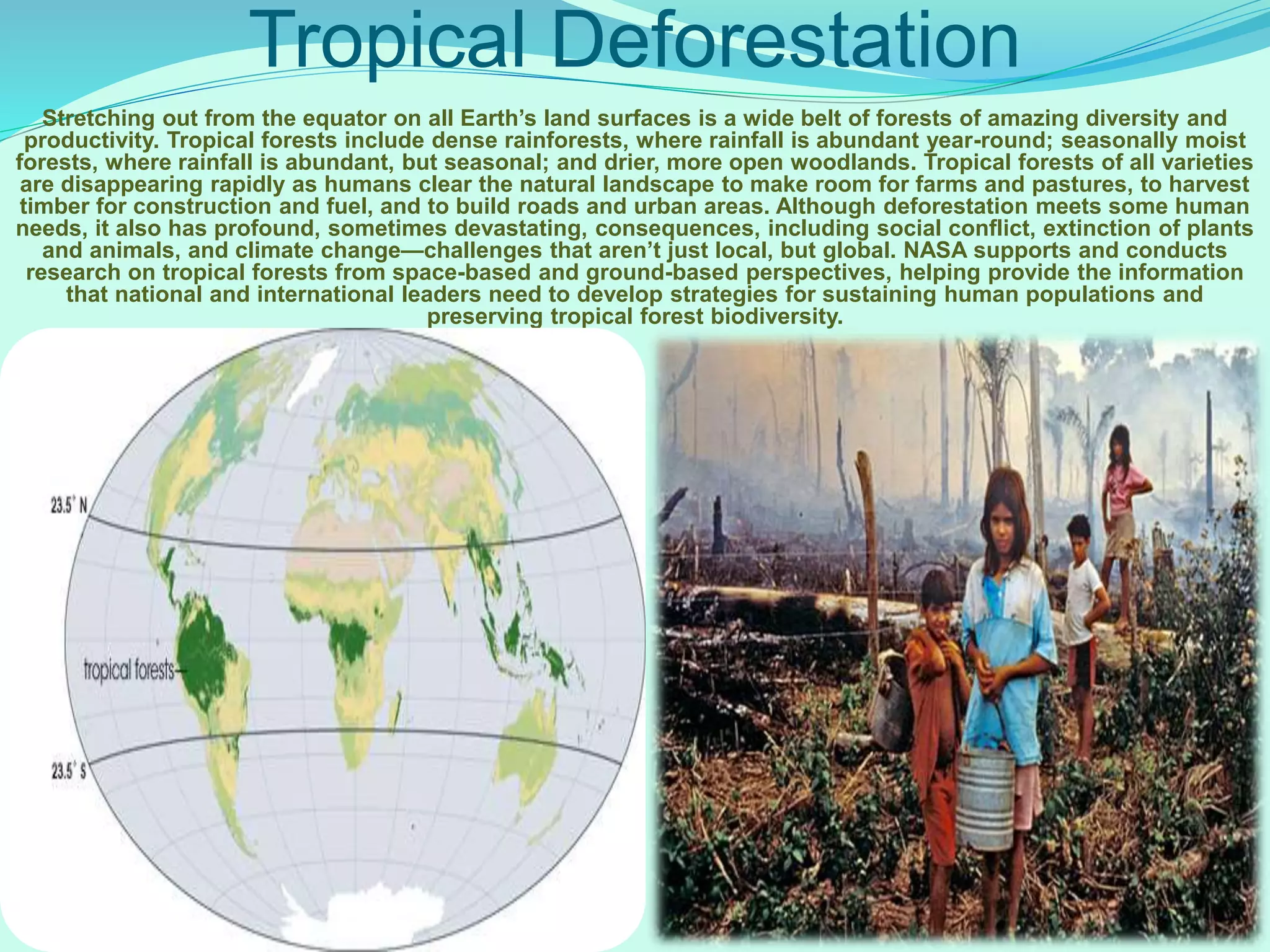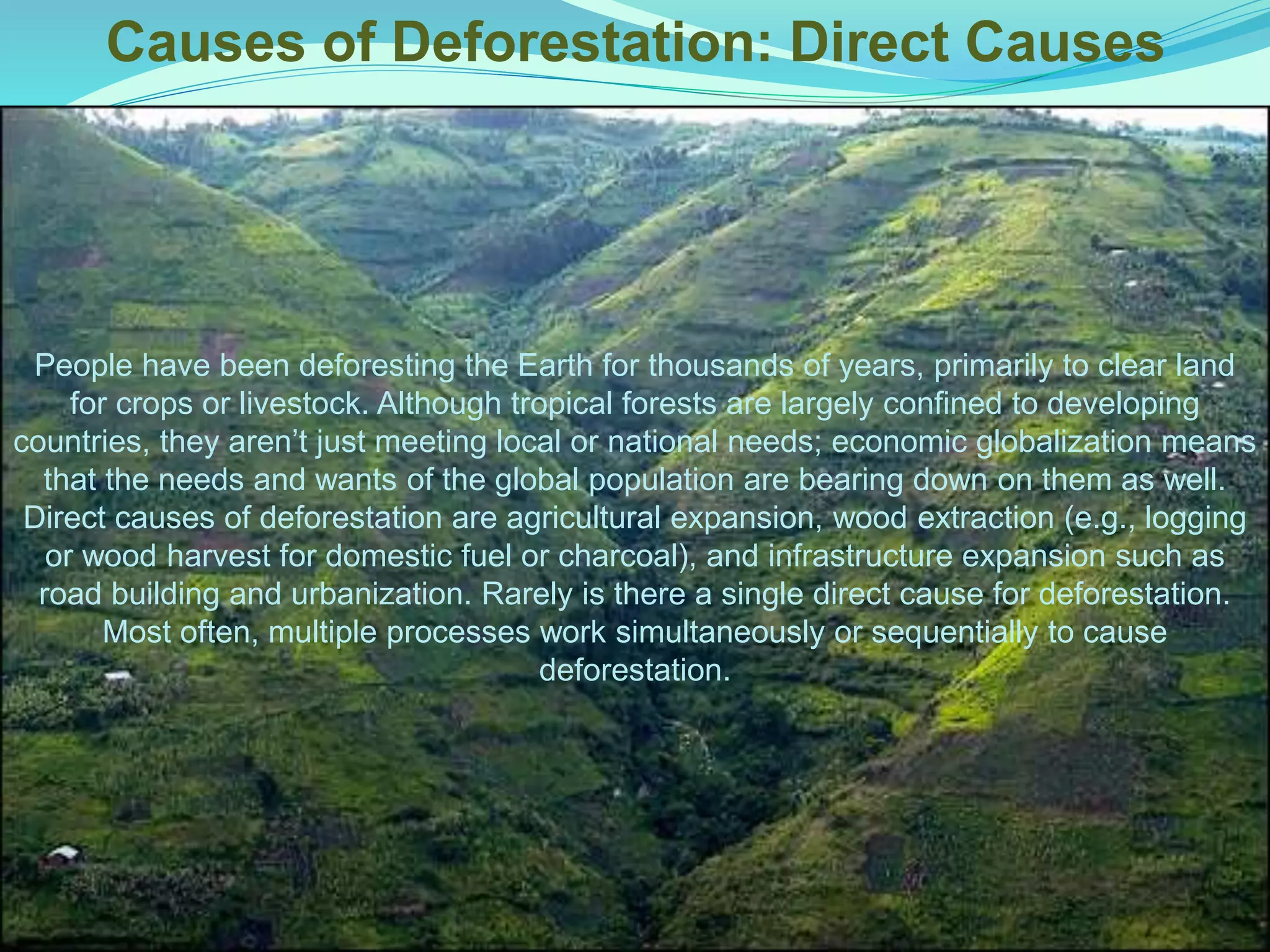Deforestation occurs at a rate of about 50,000 square miles annually, an area roughly the size of England. The main direct causes of deforestation are agricultural expansion for subsistence and commercial farming and livestock grazing, as well as wood extraction through logging and infrastructure expansion. Underlying causes include poverty, government development policies, and global economic factors like markets and subsidies. Strategies to sustain tropical forests include sustainable agriculture and harvesting, ecotourism, and integrating science into national land use plans.














